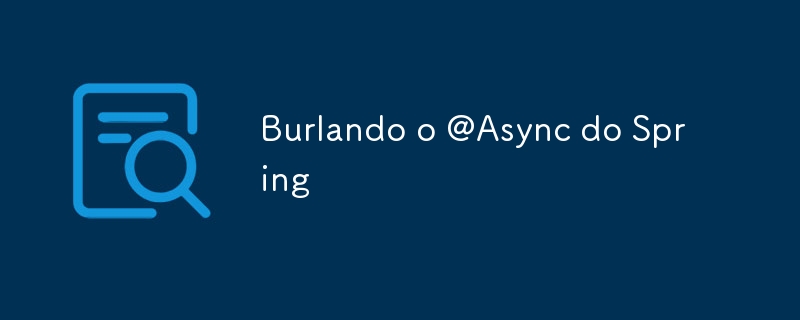Burlando o @Async do Spring
- 王林原创
- 2024-09-12 10:21:001316浏览

使用 Spring 构建应用程序时,通常使用 @EnableAsync 注解来启用异步执行,并在 @Async 的帮助下over 方法很容易使它们异步。
@Async 基本上有两个使用规则:
- 带注释的方法必须是public
- 方法调用者不能来自同一个类
在下面的示例中,不会出现编译问题,但方法(尽管使用 @Async 注解)不会按预期执行。
@Slf4j
@Service
@RequiredArgsConstructor
public class HelloService {
public String get() {
log.info("Chegou!");
print();
return "Ola!";
}
@Async
@SneakyThrows
public void print() {
Thread.sleep(Duration.ofSeconds(5));
log.info("Burlado!");
}
}
我们通常希望,因为这是类的责任,所以必须异步执行的代码块保留在其中。怎么解决?
简单!
我们只需要创建另一个有帮助的类,例如:
@Service
public class AsyncService {
@Async
public void run(final Runnable runnable) {
runnable.run();
}
@Async
public <O> O run(final Supplier<O> supplier) {
return supplier.get();
}
}
我们对该 bean 进行依赖注入,其中需要异步执行,最重要的是,我们可以将方法设为私有。
@Slf4j
@Service
@RequiredArgsConstructor
public class HelloService {
private final AsyncService asyncService;
public String get() {
log.info("Chegou!");
asyncService.run(this::print);
return "Ola!";
}
@SneakyThrows
private void print() {
Thread.sleep(Duration.ofSeconds(5));
log.info("Burlado!");
}
}
这个小例子演示了几个概念和资源的应用:控制反转、依赖注入、SOLID、设计模式、功能接口。
以上是Burlando o @Async do Spring的详细内容。更多信息请关注PHP中文网其他相关文章!
声明:
本文内容由网友自发贡献,版权归原作者所有,本站不承担相应法律责任。如您发现有涉嫌抄袭侵权的内容,请联系admin@php.cn

